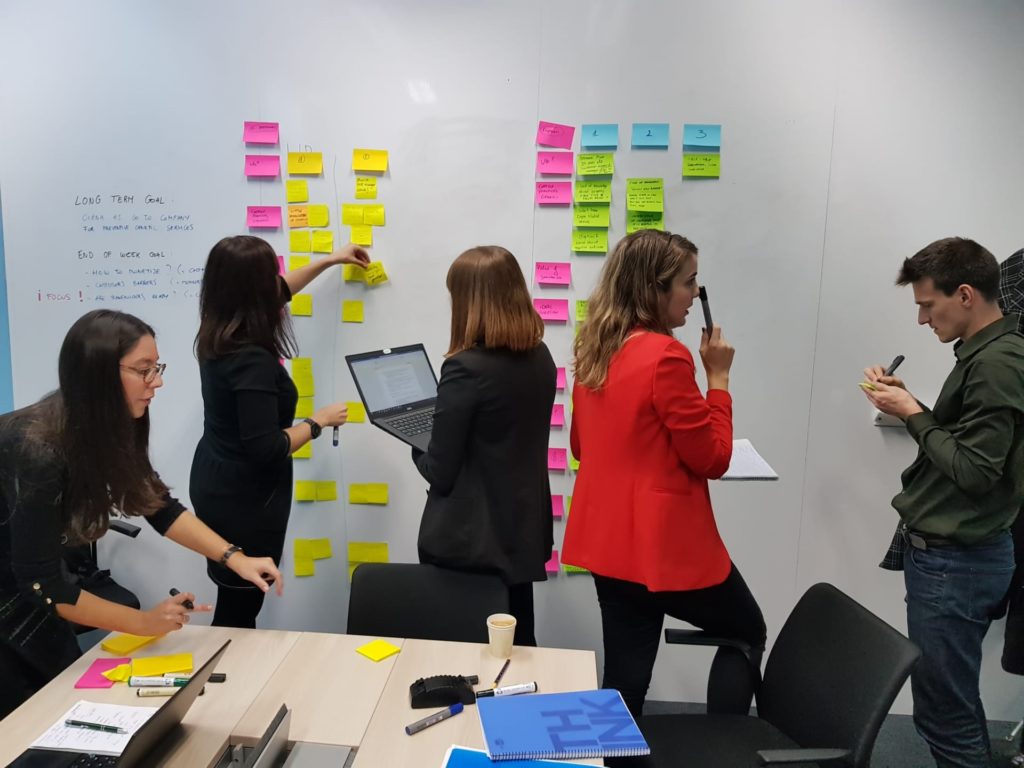The healthcare industry is constantly evolving. This year, we saw the healthcare industry fire up their research and development in face of one of the biggest health crises of our time. Pharmaceuticals companies, in particular, have been working around the clock to develop treatments and vaccines for COVID-19 and there are now more than 50 COVID-19 vaccine candidates in trials.
However, healthcare goes beyond pharmacology, and across the industry everything from appointments, to care delivery and even receiving prescription medicine, has been transformed to embrace remote and digital ways of working. The challenge is, within such a complex and competitive environment, how can companies find the best new ideas, develop proofs of concept and design them into workable solutions? Then how do they take them to market successfully before someone else comes along and does it first?
Driving collaborative, purposeful innovation
Innovation is increasingly seen as critical by business leaders. At the same time, there is a recognition that innovation needs to be more purposeful, and it cannot be carried out in isolation. In addition to a large amount of innovation dedicated to identifying new and improved ways to treat patients, there is also a large amount of investment into enhancing health services to meet a wide spectrum of consumer needs and preferences.

This was the reason why we established our Innovation Hub three years ago. As a global health service company offering a wide range of health services, we knew that we had to find a way to remove silos and encourage corporate-wide sharing in order to continuously develop and enhance its offerings in an efficient and cost-effective manner.
To make innovation an embedded part of business, it is essential to have dedicated resources and a team of people who can spend time on innovation exclusively. Such a team can act as an internal accelerator to develop and carry out innovation projects - sponsoring and supporting innovation initiatives from across the business, then sharing best practices across the organization.
Project One was our first large innovation project where we developed an integrated platform to address patients’ desire to take more responsibility for their own healthcare, and the need for medical care providers to reduce the number of steps in the patient journey. We developed it by applying proven techniques of design thinking to co-create solutions alongside our stakeholders. We then tested the prototypes with patients and providers, before running a pilot in two cities, with a handful of providers and thousands of customers. The insights of this are now helping define how we can build out the solution across our businesses and customer offer.
This project gave us the blueprint to build our innovation process at Cigna. While another company’s process would certainly differ in some way, the multiple-step approach is easily applied in other settings.
In terms of the types of projects to invest in, here is an example approach to follow:
In the early stages focus on Horizon 1 and 2 innovations, which are more incremental types of innovation that improve or expand on existing solutions. As the organization becomes more adept at the innovation process and open up more channels to find new ideas, aim at carrying out more Horizon 3 innovations – disruptive, “blue ocean” innovations that create entirely new value propositions and market opportunities.
Adapting to changes, innovating for transformation
Along with long term projects, you also need to make sure that you remain agile to take account of changing needs. As countries around the world went into lockdowns and imposed movement restrictions, virtual health services have taken flight. During this time, we saw the number of online appointments increase by over 500% and Deloitte predicts that 5% of all doctor visits across the world in 2021 will take place virtually.
The rise of virtual care, coupled with the growing trend of consumers being much more engaged in their own health, are contributing to the strategic direction of healthcare innovations. We are seeing healthcare and disease prevention become more convenient and accessible and we are moving towards a participatory approach to health. These are often delivered through digital health and consumer engagement solutions, which can be in the form of IoT applications and electronic health records, enabling customers to take charge of their health wherever they are.
One example of how we are responding is our pilot of a new Symptom Checker to offer possible diagnosis and suggest next steps using an AI tool that analyses the user’s symptoms. Another is an app that screens for atrial fibrillation, the most common cardiac arrhythmia – a condition where one’s heartbeat is irregular or too rapid – just by using a smartphone. During a pilot among 450 participants in late 2018, three people were diagnosed with atrial fibrillation and 35 were diagnosed with other cardiac arrhythmias. As a result of this, the solution is now being rolled out more broadly.
Building a culture of innovation

In a fast-changing world, how we work on innovation affects our ability to spark, shape and spread disruptive ideas to stay ahead of the curve and improve the services available to people.
Innovation is all about people. We need their ideas, their buy-in, and their time and effort to bring these ideas to fruition, and it is our job as drivers of innovation in the organization to make sure that they have the right culture, environment and skills to do so. As a compact team, we also need to leverage the support of colleagues from different markets and business units to perform our role.
I recommend an internal innovation catalyst program to accelerate innovation by actively involving selected employees from different markets in the innovation process. These “Catalysts” are provided with skills and mindset training as well as opportunities to work on real-life problems together with senior leaders across different business units.
This includes the teaching of design thinking principles and how to run these in parallel with organization processes to deliver the best outcome. In particular, it is crucial that innovators work hand-in-hand with IT and operational personnel from the start to ensure that new solutions can be embedded in existing systems and processes.
Another essential part of building an innovation culture is to celebrate success and encourage trial and error. Award programs are a great way to discover innovators across the organization by motivating them to share their innovation projects, no matter big or small.
What’s next?
As the world moves into a post-pandemic phase in 2021, the healthcare industry must continue to innovate to deliver a personalized approach to health that utilizes digital technologies and apps to provide a 360 approach to care.
It’s clear that people will continue to take a more active role in managing their health and want to embrace the benefits that virtual and digital healthcare offers. To meet this demand, healthcare companies need to actively invest in the development of new services that enable people to improve their overall health, as well as helping them to manage ongoing health issues while living as full and active a life as possible.





